Heading out the door? Read this article on the new Outside+ app available now on iOS devices for members! Download the app.
When it comes to lifting weights, countless amounts of conflicting information makes it almost impossible to separate fact from fiction. Because of this, many women end up in a vicious cycle of a never-ending cardio routine and a fear of lifting heavy weights.
Tragic.
You’ve probably heard some of the following myths from a self-proclaimed “expert” on the internet, at work or even in the gym who has absolutely no idea what they’re talking about.
However, do not despair:
The fitness gurus from CheckMeowt are about to bust these myths once and for all to help you get leaner, fitter and stronger. After all, that’s what it’s all about!
Myth 1 – Lifting Weights Will Make You Muscly
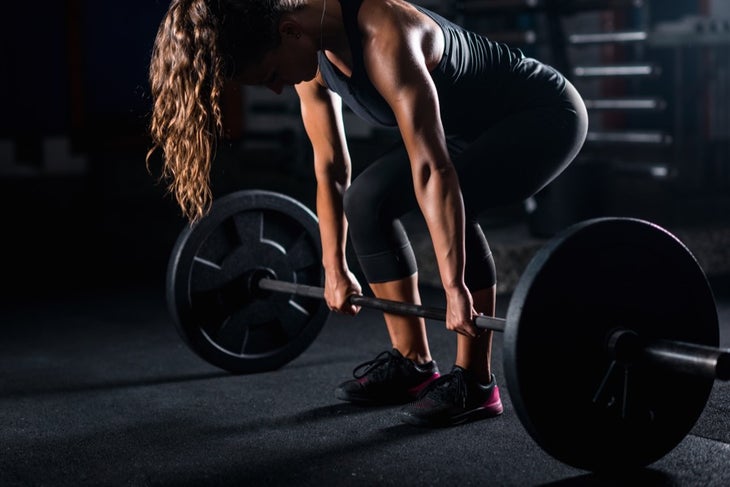
This is a classic myth that doesn’t seem to be going away anytime soon.
Lifting weights builds muscle and will subsequently burn fat. Numerous studies have shown that women who perform resistance training were better able to build strength, improve their body composition and bolster their metabolism.
Most women do not fully understand the amount of training required to put on a lot of muscle. Having said that, women have much lower testosterone levels (the growth hormone needed to build muscle) when compared to men, so the risk of being “muscly” is far lower.
However, there’s no escaping that some form of weight training will build muscle, but the muscle you put on will, on a whole, help you achieve a much leaner and trimmer physique. The amount of muscle you develop is dependent on your genetics, volume, intensity and the load that you use.
So if you aren’t looking to put on too much muscle, control all possible variables.
Myth 2 – Cardio Burns More Calories Than Weightlifting, So It’s More Beneficial
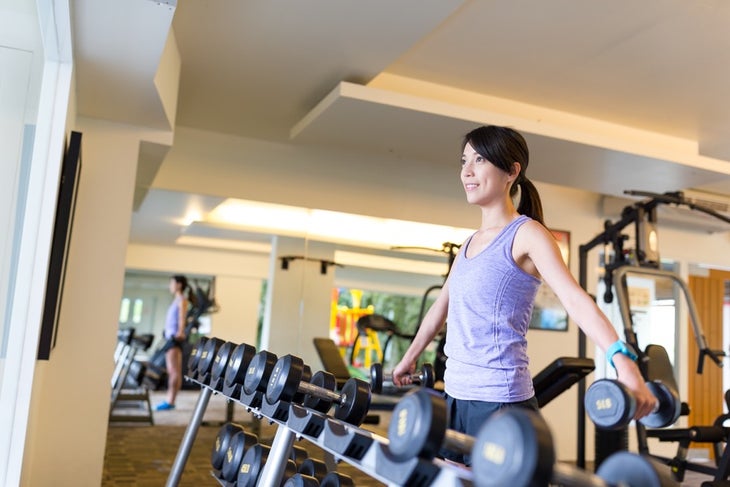
This couldn’t be any further from the truth.
While cardio certainly has its place in keeping you fit and healthy, it’s not the only outlet. If you are looking to run at a competitive level, several studies have shown that resistance training can aid aerobic output and performance.
Training for endurance doesn’t help build strength or help you achieve an aesthetically proportional physique. Performing cardio day in and day out may actually be moving you further away from your goal.
It goes without saying that adding some resistance training into your fitness regime will help you develop lean muscle mass, which in turn will burn more calories. Don’t completely rule it out!
Myth 3 – Women Need Their Own Protein Powder Compared to Men
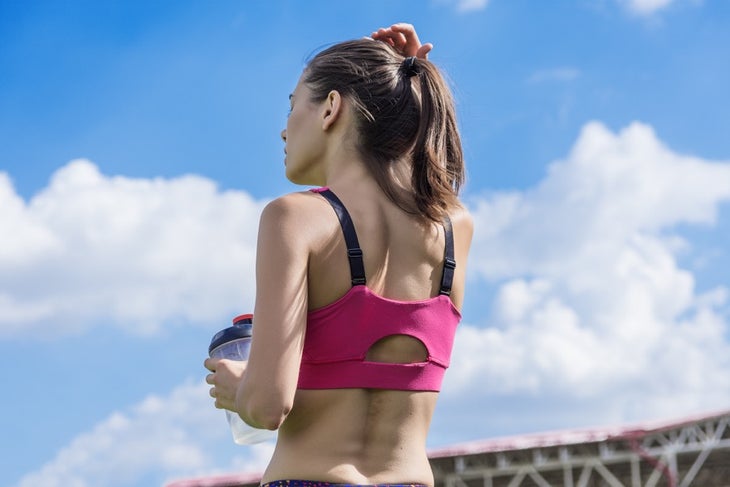
What better way to market a protein powder supplement than to distinguish it from men with a pink label and throw in the word “woman” before every product’s name?
You won’t grow a beard — men and women can both consume the same protein powder. There aren’t any “male-friendly” ingredients included in protein supplements for you to be concerned about.
Although the dosage may vary for both men and women, each brand of protein will typically have their own amounts of protein, carbohydrates, fat and calories. Depending on what you are looking to accomplish, you can pick a protein supplement that will assist your lifestyle.
Looking for a high-protein, low-fat and low-carb protein powder? Are you lactose intolerant and can’t consume dairy? There is almost certainly a protein supplement available on the market suitable for you.
Avoid all the hype and marketing. Use the macronutrient and ingredient profile of the protein supplement in question to help inform your purchasing decision — not the eye-catching label.
Myth 4 – Light Weights Are All You Need
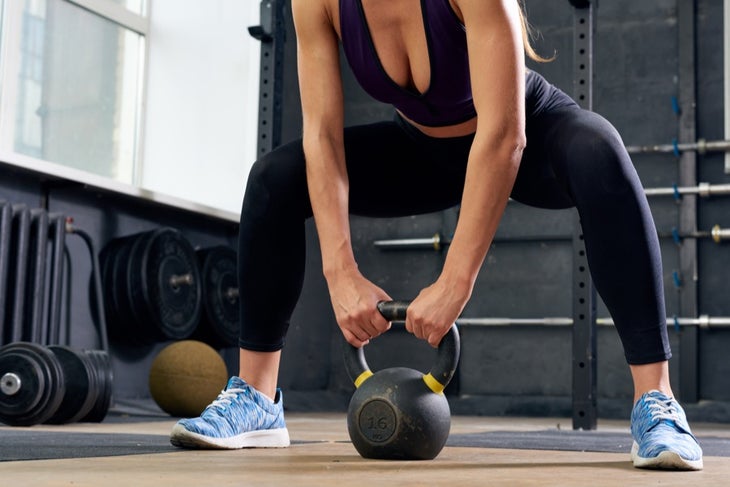
When starting out, it is imperative to begin lifting a light load in order to perfect your form and get a better understanding of how to manage resistance. However, progression is key in order to get the most out of your physique.
This is no different for women because it’s easy to stagnate on your progress without challenging yourself. It is all too common to hear about women who are afraid of lifting heavy weights and instead focus on “toning” their body using light weights. Heads up — there is no such thing as toning.
You can develop lean muscle mass and burn fat, but lifting light weights can only take you so far before you need to begin maximizing your efforts. Consistently lifting light weights builds up a tolerance while diminishing effects.
You also can’t spot-reduce fat in any one area from lifting weights. Weight loss comes as a cumulative result of a balanced diet and an effective workout program.
In order to increase strength, stamina, endurance and muscle mass, you’ll eventually need to drop those light weights and move on to the next set of weights to truly reap the rewards of your effort. This will also affect your daily life by increasing your body confidence, reducing stress and helping you feel more vibrant overall.
Myth 5 – The Older You Get, the More Dangerous Lifting Becomes
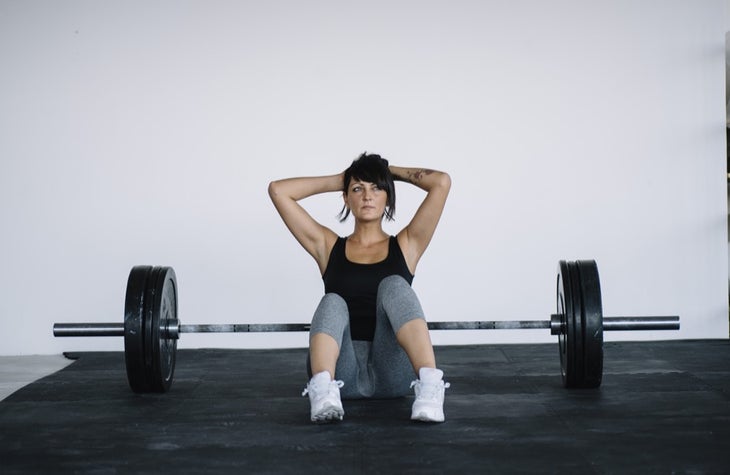
Quite the contrary — exercise in older women is fundamentally crucial.
It goes without saying that the older you get, the more at risk you are to bone and muscle deterioration, reduced flexibility and a slower metabolism. Frequent exercise, especially weightlifting, can help slow down the aging process and keep your body in top shape.
By incorporating a strength-training program as part of your lifestyle, not only are you able to build muscle effectively, but you’re also better able to increase the strength of your joints and tendons. Overall, lifting weights can help improve the quality of your day-to-day life and can reduce the likelihood of preventable injuries and falls in old age.
Myth 6 – In Order to Grow a Booty, You Need to Train Legs Every Day
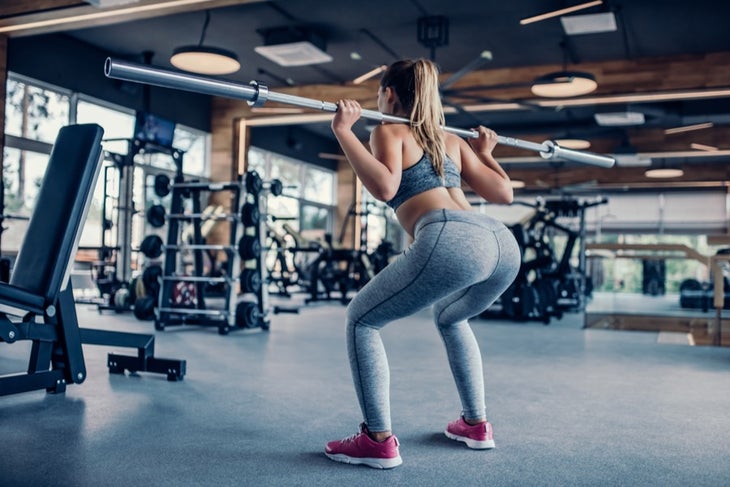
When it comes to weightlifting and building a peachy booty, it is important to allow your body to recover anywhere between 48 and 72 hours (as a rule of thumb).
The legs are the body’s largest muscle group and need longer to make a full recovery before being worked on again. The growth process begins when your body is trying to rebuild and repair, and training every day puts you at risk of “overtraining,” which can adversely impact your hormonal system.
In turn, training every day can cause injuries, make you stagnate quicker, and can make you more susceptible to being ill from a fatigued central nervous and hormonal system.
If you are looking to build a booty, avoid two consecutive days of training and have a day off between each workout. During the days you are not in the gym, aim for at least eight hours of sleep followed by eating between three and five balanced meals a day to induce a full recovery.
Wrapping It Up
Now that you’ve been fully equipped with the knowledge that lifting weights can benefit you more than you might’ve realized, the road has been cleared for you to get in the gym and pump that iron.
Just remember: Slow and steady wins the race.
Lifting weights should be about having fun and reducing stress as much as it is also about sculpting your dream physique. Don’t get caught up in the marketing and hype — simply stay focused and keep your diet in check and you’ll be looking like a glamour model in no time.